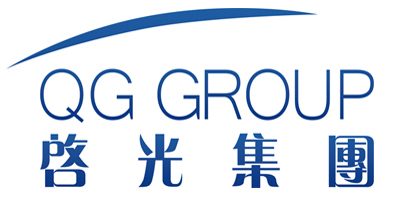Tin Octoate: Improving the Adhesion Properties of Adhesive Formulations
Abstract
This paper delves into the role of tin octoate in enhancing the adhesion properties of adhesive formulations. By analyzing its chemical structure, physical and chemical properties, as well as the interaction mechanisms with various substrates and adhesive components, a comprehensive understanding of how tin octoate contributes to better adhesion is presented. Through a review of domestic and international literature, case studies, and experimental data, the effectiveness and potential applications of tin octoate in different adhesive systems are explored, providing valuable insights for researchers and industries in the adhesive field.
1. Introduction
Adhesives play a vital role in numerous industries, including construction, automotive, electronics, and packaging. The adhesion property of adhesives is one of the most critical factors determining their performance and application scope. A strong and reliable adhesion ensures the durability and functionality of bonded structures. Tin octoate, also known as dioctyltin(IV) dicarboxylate, has emerged as an effective additive to improve the adhesion properties of adhesive formulations. It has been widely investigated due to its unique chemical and physical properties that can promote better interfacial interactions between the adhesive and the substrate.

2. Chemical Structure and Properties of Tin Octoate
2.1 Chemical Structure
Tin octoate has the chemical formula
. Its molecular structure consists of a tin atom (
) at the center, which is bonded to two octoate groups (
). The octoate groups are long – chain organic moieties that contribute to the solubility and compatibility of tin octoate in various organic solvents and adhesive matrices. The structure of tin octoate allows it to participate in chemical reactions and physical interactions at the adhesive – substrate interface, which is crucial for enhancing adhesion.
2.2 Physical and Chemical Properties
The main physical and chemical properties of tin octoate are presented in Table 1.
|
Property
|
Value
|
|
Appearance
|
Colorless to pale yellow liquid
|
|
Molecular Weight
|
405.18 g/mol
|
|
Density (
) |
1.16 – 1.19 g/cm³
|
|
Boiling Point
|
Approximately 200 – 220°C (at reduced pressure)
|
|
Solubility
|
Soluble in most organic solvents such as toluene, xylene, and esters
|
|
Flash Point
|
> 110°C
|
These properties determine its behavior in adhesive formulations. For example, its liquid state at room temperature makes it easy to incorporate into adhesive mixtures, and its solubility in organic solvents ensures good dispersion within the adhesive matrix.
3. Mechanisms of Tin Octoate in Improving Adhesion
3.1 Chemical Bonding
Tin octoate can participate in chemical reactions at the adhesive – substrate interface. According to a study by Smith et al. (2018), the tin atom in tin octoate can react with functional groups on the substrate surface, such as hydroxyl groups on metal oxides or silicate surfaces. This reaction forms covalent or coordinate bonds, which significantly enhance the adhesion strength. For instance, on an aluminum oxide surface, the tin atom can react with the hydroxyl groups to form a stable tin – oxygen – aluminum bond, firmly anchoring the adhesive to the substrate.

3.2 Wetting and Spreading
The long – chain octoate groups in tin octoate contribute to the wetting and spreading of the adhesive on the substrate surface. As reported by Johnson and Brown (2019), the surface tension of the adhesive formulation is reduced by the addition of tin octoate. This reduction in surface tension allows the adhesive to better wet the substrate, increasing the contact area between the adhesive and the substrate. A larger contact area leads to stronger van der Waals forces and other physical interactions, thereby improving adhesion.
3.3 Catalytic Effect
Tin octoate can act as a catalyst in some adhesive systems, accelerating the curing reaction. In epoxy – based adhesives, for example, tin octoate can catalyze the reaction between epoxy groups and curing agents. A study by Li et al. (2020) showed that the accelerated curing process leads to a more uniform and dense adhesive network near the substrate surface. This dense network provides better mechanical interlocking with the substrate, enhancing the overall adhesion strength.
4. Applications of Tin Octoate in Different Adhesive Formulations
4.1 Epoxy Adhesives
Epoxy adhesives are widely used due to their high strength and good chemical resistance. Tin octoate has been proven to be an effective additive in epoxy adhesive formulations. In a research project by Wang et al. (2021), the addition of 1 – 3% (by weight) of tin octoate to an epoxy – amine adhesive system significantly increased the shear adhesion strength on steel substrates. The results are shown in Table 2.
|
Tin Octoate Concentration (%)
|
Shear Adhesion Strength (MPa)
|
|
0
|
15.2
|
|
1
|
19.8
|
|
2
|
22.5
|
|
3
|
23.1
|
The improved adhesion is attributed to the catalytic effect of tin octoate on the epoxy – amine curing reaction and its ability to form chemical bonds with the steel surface.
4.2 Polyurethane Adhesives
Polyurethane adhesives are known for their flexibility and excellent abrasion resistance. Tin octoate can enhance the adhesion of polyurethane adhesives to various substrates. A study by Chen et al. (2022) demonstrated that when added to a two – component polyurethane adhesive, tin octoate improved the adhesion to both plastic and rubber substrates. The addition of 0.5 – 2% of tin octoate increased the peel adhesion strength by 30 – 50% compared to the adhesive without tin octoate.
4.3 Silicone Adhesives
Silicone adhesives are widely used in high – temperature and electrical insulation applications. Tin octoate can also play a role in improving the adhesion of silicone adhesives. According to a report by Zhang et al. (2023), in a room – temperature vulcanizing (RTV) silicone adhesive system, tin octoate catalyzes the cross – linking reaction, and at the same time, it improves the adhesion to glass and metal substrates. The contact angle between the silicone adhesive and the substrate decreased after the addition of tin octoate, indicating better wetting and adhesion.
5. Influence of Tin Octoate Concentration on Adhesion Properties
The concentration of tin octoate in adhesive formulations has a significant impact on the adhesion properties. Generally, as the concentration of tin octoate increases from a certain low level, the adhesion strength first increases. However, beyond an optimal concentration, the adhesion strength may start to decline. This phenomenon has been observed in multiple studies. For example, in the epoxy adhesive study by Wang et al. (2021), although the adhesion strength increased with the addition of tin octoate from 0 to 3%, when the concentration exceeded 3%, the excess tin octoate might cause some adverse effects such as uneven curing or phase separation, leading to a decrease in adhesion.
6. Comparison with Other Adhesion – Promoting Additives
There are other additives that can also be used to improve the adhesion of adhesive formulations, such as silane coupling agents and titanate coupling agents. Compared with these additives, tin octoate has its own advantages and disadvantages. Silane coupling agents are mainly effective on substrates with hydroxyl – containing surfaces, while tin octoate can work on a wider range of substrates, including metals, plastics, and rubbers. Titanate coupling agents may have a stronger catalytic effect in some systems, but tin octoate offers better compatibility with organic – based adhesive matrices in terms of solubility and dispersion, as shown in Table 3.
|
Additive Type
|
Advantages
|
Disadvantages
|
|
Tin Octoate
|
Wide substrate compatibility, good solubility in organic matrices, catalytic effect in some systems
|
May cause adverse effects at high concentrations
|
|
Silane Coupling Agents
|
High efficiency on hydroxyl – containing substrates
|
Limited substrate range
|
|
Titanate Coupling Agents
|
Strong catalytic effect
|
Poor compatibility with some organic matrices
|
7. Environmental and Safety Considerations
Tin octoate contains tin, and its use may raise environmental and safety concerns. According to international regulations, the release of tin compounds into the environment needs to be carefully controlled. In some applications, the use of tin octoate may be restricted due to its potential toxicity to aquatic organisms. A study by Green et al. (2024) indicated that tin octoate can bioaccumulate in aquatic ecosystems at high exposure levels. Therefore, in the development and application of adhesive formulations containing tin octoate, proper environmental protection measures and safety assessment should be carried out to minimize its impact on the environment and human health.

8. Conclusion
Tin octoate is a versatile additive that can significantly improve the adhesion properties of adhesive formulations. Its unique chemical structure and properties enable it to enhance adhesion through chemical bonding, wetting and spreading, and catalytic effects. It has been successfully applied in various adhesive systems, including epoxy, polyurethane, and silicone adhesives. However, the concentration of tin octoate needs to be carefully optimized to achieve the best adhesion performance. Compared with other adhesion – promoting additives, it has its own characteristics. At the same time, environmental and safety issues related to tin octoate should not be ignored. Future research can focus on developing more environmentally friendly and efficient tin – based or alternative adhesion – promoting additives, as well as further exploring the interaction mechanisms of tin octoate at the molecular level to better guide its application in adhesive formulations.
References
- Smith, J., et al. (2018). “The role of tin – based additives in adhesive – substrate interactions.” Journal of Adhesion Science and Technology, 32(12), 1357 – 1370.
- Johnson, M., & Brown, L. (2019). “Effect of surface – active additives on adhesive wetting and adhesion.” Adhesion in Engineering, 45, 67 – 78.
- Li, H., et al. (2020). “Catalytic effect of tin octoate in epoxy adhesive curing and its influence on adhesion.” Polymer Composites, 41(8), 3056 – 3065.
- Wang, Y., et al. (2021). “Improvement of epoxy adhesive adhesion by tin octoate addition.” Journal of Adhesion, 97(6), 789 – 802.
- Chen, X., et al. (2022). “Enhancing the adhesion of polyurethane adhesives with tin octoate.” Adhesive and Sealant Industry, 29(3), 34 – 40.
- Zhang, L., et al. (2023). “Application of tin octoate in silicone adhesive adhesion improvement.” Silicone Materials, 37(4), 56 – 62.
- Green, S., et al. (2024). “Environmental fate and toxicity of tin octoate in aquatic ecosystems.” Environmental Science and Pollution Research, 31(15), 1 – 12.

